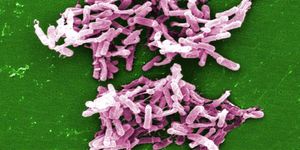Chemists Synthesized Effective Antidote For Uranium Poisoning
Uranium poisoning is unusual to the general population but does happen to miners, mineral mill and fabrication workers. Through inhaling and ingestion, uranium-rich particulates can enter the human body and quickly react with phosphate, which makes them hard to clear out. The alpha radiation emitted by uranium atoms can do massive damage to our tissues and organs.
A team of scientists from China has come up with a novel antidote that's highly effective and efficient in removing uranium from biological bodies. They are confident that it would be a more superior option than the current benchmark treatment.
Most uranium in nature exists in the form of uranyl oxide. Both the two main isotopes—uranium-235 and uranium-238—decay by emitting alpha particles, which cause breakage of DNA double-strand when near biological tissues.
Between 2008 and 2009, an investigation on groundwater contamination in Northen India brought uranium poisoning to the public's attention. As revealed by the investigators, two coal-burning power stations in the state of Punjab discharged airborne particles that are rich in uranyl oxide. When the flying ash landed, it caused widespread water contamination. The deposit of uranium in human bodies caused over 200 cases of birth defects and the highest cancer rate in the whole country.
For treating uranium poisoning, two pentetic acid (DTPA)-based medications are the only Food and Drug Administration-approved drugs. DTPA belongs to a type of organic molecules known as the chelators, which are commonly used for medical purposes. For example, deferasirox is an oral chelator that is prescribed for patients whose blood has excessive iron. For this drug to work, deferasirox is given through intravenous (IV) injection. In the bloodstream, two molecules of deferasirox trap an iron by forming a "cage".
The goal of the Chinese team is to find alternatives to DTPA-based uranium antidotes. Previous studies showed that DTPA is ineffective in taking out intracellular actinide deposits because the molecule is too hydrophilic to cross phospholipid-rich cell membranes.
Through computer-based simulation and laboratory testing, they identified a hydroxypyridinone-based ligand 5LIO-1-Cm-3,2-HOPO, which exhibits a rather strong affinity for uranium atom, thanks to its claw-like three-dimensional structure that trap a uranium atom with four coordination bonds. Its aromatic pyridine rings also allowed the chelator to travel through membranes with ease.
In vitro and in vivo experiments showed that 5LIO-1-Cm-3,2-HOPO can remove uranium effectively. The decorporation efficiency, the speed of soaking up kidneys and bones, was almost independent of the treatment time, suggesting the chelator started to work nearly instantly. What' more, this ligand also showed a high oral decorporation efficiency, making it even easier for doctors to administer the medication quickly, en masse.
This breakthrough research is reported in the journal Nature.
Want to know more about radiation poisoning? Check out this video from Seeker.
What Does Radiation Poisoning Do to Your Body? (Seeker)
Source: Science Alert










